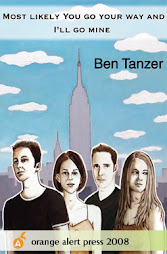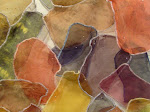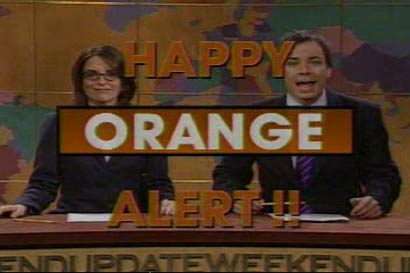
Hilary A. Scott
As technology advances and the tools we once relied on become unnecessary and time consuming, what will become of them? For example, with the ease of google maps, the hand-held GPS devices, on-star, etc., what do you do with your maps? You know, the paper map, the one shoved under the seat of your car next to your missing cassette of The Queen is Dead and that roll of film. Well, Georgia artist Hilary A. Scott has found a creative and beautiful way to utilize these unnecessary and neglected maps and turn them into works of art.
Hilary reinterprets the classic map by utilizing old fashion photo developing and classic painting. She redefines and explores roads, finds new directions, and completely changes what once was a tool. This exploration delves into the relationship between man and nature, and the paved freedom that cuts through forest and over rivers. It is a tracing of history, a history of discovery and necessity and knowledge, reduced to lines and legends.
Recently, Hilary was kind enough to answer a few of my questions.

Orange Alert (OA): I've only seen a few other artists focus so intently on the subject matter that you focus on. When did your fascination with maps begin?
Hilary A. Scott (HS): I think I have always been fascinated with maps, since I was young. My dad was always really into them for hiking, fishing and recreational planning and we could pour over them on the coffee table for hours. In college I lived and traveled abroad a lot and checking out where I was going to, or where I had been, in a foreign country, always made it seem more real. You can actually see distance between things in maps and get a glimpse into what is around that you didn't see. Plus, the shapes, patterns and line work is absolutely beautiful to me. When I moved from the West Coast to the East Coast my obsession with the cross country drive made me realize how little I had observed the geography of our own country.
OA: Have you been to all fifty states? Have you considered working on maps with a smaller scale (i.e. counties or cities)?
HS: I have not been to ALL of the fifty states but it is definitely a goal of mine. Right now I am working on a specific 'zoom', if you will. Once I feel like I have completed the states in drawing, cyanotype and paint I will move on to do more world maps, to focus on county borders. I am already working on more intimate memory maps of cities and places with the globe paintings.
OA: The process of creating cyanotypes is incredible, but it sounds time consuming. What got you involved in cyanotypes? How long does the process take?
HS: Cyanotype is actually an alternative form of photography processing. It is one of the oldest forms and uses two salt compounds mixed together to make the treated surface sun sensitive. I used to play with it in small sheets when I was a kid. I guess my mom got it in a kit. We would place keys, leaves, shells and such on the paper and watch it change to produce what i now know is called a photogram. It was so magical. It still is. I have always been attracted to that rich blue color, even in my painting and I was studying architectural blueprints as a form of map making when I rediscovered this old process. It is not too bad once you get a system down, it just takes planning ahead. It works best between 12-3 on a sunny day here, so I have to plan around the weather. Depending on the sun, it exposes in about 15 min. then I hose it off to rinse out the developer. Sometimes they turn out and sometimes they are not so great.

OA: Do you start with photos? Where do you find your photos?
HS: In the work I am doing now, I start with maps. Real maps, from AAA. I don't think people really use them anymore because of automated services and the Internet. For the work I was doing before, I worked from snap shots I took from the steering wheel on road trips.
OA: Much of your work is driven by roads and following where they lead. What does the road represent to you?
HS: For me, and for many, the road is an analogy for life as well as connectivity... a direction and a path. Since the evolution of the automobile, roads are everywhere in America. They connect people and make it possible for us to see the land. On long drives that pavement never changes, it is a constant. While the scenery connected to it is ever changing. It is the perfect place for freedom, thought and conversation. To view the road from a map we can see how humans have chosen to organize, separate and connect the natural elements we were presented with.
OA: What's next for Hilary A. Scott?
HS: Well, I have a big solo coming up this Fall. (If you are in or near Savannah Nov 13 - Dec 2 come check it out). That is where my energies are currently being pointed. After that I will make the coast to coast road trip again as I move back to California in December. There, I will be plugging into the exciting art scene in the LA area, looking for a job and getting married to a very talented painter (check out his work at http://www.joshuadildine.com/). Lots of change ahead, and I cant wait to see where the road will take me!

Bonus Questions:
OA: Coffee? If yes, where can you find the best cup in your area?
HS: For a good cup of coffee and conversation in Savannah, GA The Sentient Bean (known as 'the bean') is the best neighborhood coffee you can get. They always have great art up and changing, comfy couches and live music for the ultimate 'artsy scene'. It is also right on Forsythe Park. Cant beat the view.
OA: What type of music do you listen to, and who are a few of your favorites?
HS: My music tastes are ever changing and I am always open to new suggestions. Anything that I can paint to is good. I err on the side of chill with favorites like Regina Spektor, The Weepies, and Iron & Wine. This may make me a uncool but, Puccini, Ella Fitzgerald and Tracy Chapman also never get old.
HS: My music tastes are ever changing and I am always open to new suggestions. Anything that I can paint to is good. I err on the side of chill with favorites like Regina Spektor, The Weepies, and Iron & Wine. This may make me a uncool but, Puccini, Ella Fitzgerald and Tracy Chapman also never get old.
For more information on Hilary A. Scott please visit her website.
+by+Nick+Volkert).jpg)





















1 comment:
Very Impressive Artist. Using maps as art is beautiful, intellectual, and adventurous. I love what Hilary Scott's work inspires.
Post a Comment